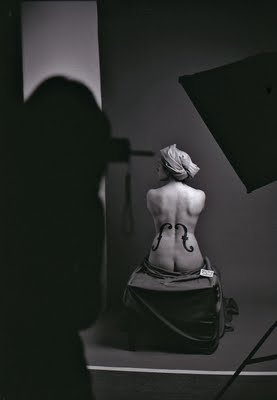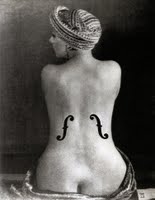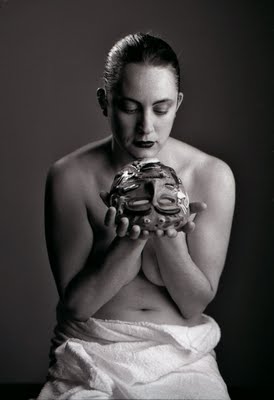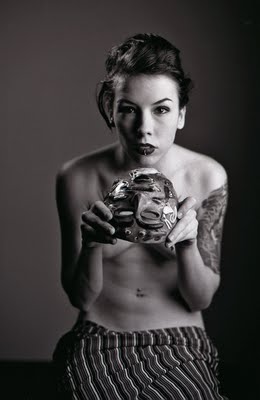Kiki de Montparnasse
Saturday, November 07, 2009

A couple of months ago I received a call from Patrick Blaeser who is the Program Coordinator: Certificate & Part Time Programs at Focal Point. “Alex, I have an idea of a course that you might like to teach. It would be called portraiture through the ages.” I thought about it and told him I would get back to him.

In the last few years I have been thinking a lot on how photography has progressed since Niépce took that first picture from his kitchen window in 1824. Because I was raised with books (I am a pre-internet baby!) I have many photography books in my library. I have amassed a considerable collection. My memory is still good. I remember most of the photographs of all of those books.
Without really knowing it, when I take a photograph, there is always an element of that photograph memory of the past. In some way every snap of my shutter is inspired by those photographs. But they are not only photographs of the past they can also be inspired by a painting or a sculpture. These works can be by artists who may be contemporaries to photography but many also preceded the age of photography.

As an example when I teach nude photography and we have a male model, sooner or later we explore Rodin’s The Thinker or Michelangelo’s David. Just about every time I bring in a mirror into a studio I recall Diego Velázquez’s Las Meninas.
I didn’t linger much before I called back Patrick to tell him I was very excited. The class began six Wednesdays ago. It is a three hour class held every Wednesday for ten weeks. This last Wednesday we brought back two of our favourite models, Shannon and Jerry. Shannon is voluptuous and Jerry is slim but curvaceous, nonetheless. Jerry admires Bettie Page. Jerry’s skin is white and she sports several tattoos and body piercings in strategic areas.

In this sixth class we worked with the inspiration of some of the photographs that Man Ray took of his model Kiki in the 20s. The more famous one is called Kiki, Ingres’s Violin. The joke of the name is that in French that name also is about obsession. Perhaps, as some say, Man Ray was not particularly inspired by the nudes of Ingres as much as using him as the excuse to get Kiki to take her clothes off.

The second picture is called Noire et blanche. In the 1920s African masks were all the rage. Even Picasso was part of that primitive movement. Since I did not have an African mask at home I brought a Mexican one made of clay.
For the f-holes we used dry erase writing board markers. One of my students, Nicky was a skillful wrapper of turbans. She also drew the f-holes and insisted in making stencils out of paper. In the first picture you can see her silhouette as she takes her picture of Shannon.

The second artist we worked on was El Greco. For this we took advantage of Jerry’s slimness. Alas I was too busy making sure everybody was doing what they were supposed to be doing so I was not able to snap any of the El Grecos. For the pictures you see here I used a Nikon FM-2 with a 50mm F-1.4 lens. Shannon could afford to rest for this as she had been very good in a previous class as John Singer Sargent's Madame X.

I worked with Kodak Tri-X and my exposures were 1/60 at f-2. I used the modeling lights of the flash units as I did not want to take shooting time from my students.
It has been a while since I have felt so excited about a class I teach. Thank you Patrick.
Addendum: Unlike our efforts where we drew the f-holes on the back of the models Man Ray drew them on his prints. It would be interesting how many of these he drew and if all those originals of his are really reproduction copies of the few he actually drew.
more Kiki via Peggy






